Search Images
Browse Content (p. 1609)

Image
Gold Ring from Mycenae
A Mycenaean gold ring depicting a hunting scene. From Grave Circle A, Mycenae, 16th century BCE. (National Archaeological Museum, Athens)
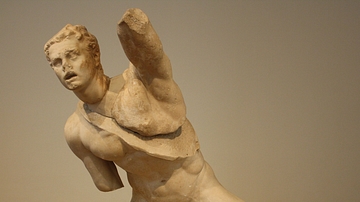
Image
Fighting Gaul
A marble statue of a fighting Gaul. Found in Delos. 100 BCE. (National Archaeological Museum, Athens)
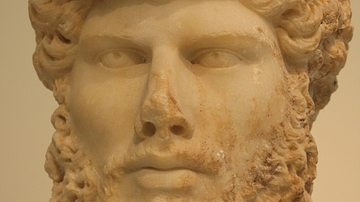
Image
Lucius Verus
A marble portrait bust of Roman emperor Lucius Verus, reign 161-169 CE. Found in Athens. (National Archaeological Museum, Athens)
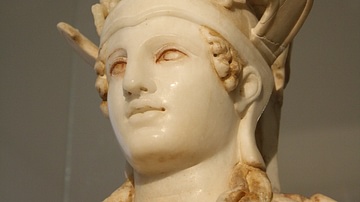
Image
Athena Parthenos, National Museum, Athens
A detail of a marble copy of the Athena Parthenos which stood in the Parthenon. Also known as the Varvakeion Athena, it is the best preserved such copy. 3rd century CE. (National Archaeological Museum, Athens)

Image
The Varvakeion Athena
A marble copy of the Athena Parthenos which stood in the Parthenon. Also known as the Varvakeion Athena, it is the best preserved such copy. 3rd century CE. (National Archaeological Museum, Athens)

Image
Justinian I
Detail of a contemporary portrait of Justinian I in the Basilica of San Vitale, Ravenna. The emperor's robe is of Tyrian purple.

Image
Mycenaean Warriors
Mycenaean warriors depicted on a krater from Mycenae known as the 'House of the Warrior Vase', 12th century BCE. (National Archaeological Museum, Athens)
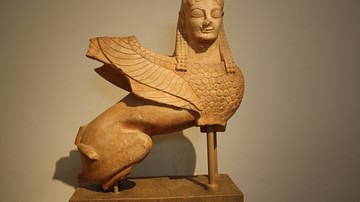
Image
Greek Funerary Sphinx
A sphinx in pentelic marble, from a funerary stele, c. 570 BCE.
National Archaeological Museum, Athens.

Image
Parthenon, East Facade
East facade of the Parthenon, Athens, 5th century BCE.
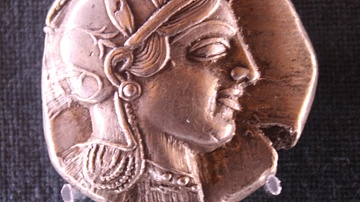
Image
Athena, Silver Tetradrachm
Athena from an Athenian silver tetradrachm, 5th century BCE. (Numismatics Museum of Athens)